In a Lonely America, One Community Still Believes in Each Other
Part 2 of the LDS Enclave Analysis exploring community health & trust
Introduction
In an age when 1 in 5 American adults say they felt lonely yesterday, one American community consistently bucks the trend. They trust their neighbors, volunteer often, and believe their community has a future. Welcome to the LDS enclave.
This is part 2 of the LDS Enclave Analysis exploring community health and trust. I linked part 1 below if you want to explore important political issues for the LDS enclave.
What is the LDS enclave you may ask? If you remember from last week, just skip to the next section.
Recently, I came across a really fun project called the American Communities Project. They regularly collect and compile data on 15 different communities within the US. One of these communities is called the “LDS Enclave.”
And from looking on the map, I am sure you can guess which one it is. Yes, it is the dark blue color in Utah and part of Idaho.
They have county data about community, media, tech, culture, socioeconomics, and much more. So, this post is 2 of 5 posts taking a deep dive into all aspects of the LDS enclave and how it differs from other communities in America:
Important National Issues & Politics
Community Health & Trust (today’s post)
Demographics & Socioeconomics
Health, Finance, & Technology
My Overall Takeaways & Analysis Post of the LDS Community
Subscribe to see the next ones!
US (& World) Landscape
One important trend in our age is the loneliness epidemic. According to Gallup, 1 in 5 American adults say they “experience[d] loneliness a lot yesterday.” Loneliness is not as high as it was during the pandemic, but has increased recently and a large proportion of the population experiences it. Loneliness has been linked to many health conditions including having a shorter life equivalent to smoking 15 cigarettes a day.
With this info as a backdrop, let’s dive into our data…
Charts
Let’s first look at how LDS enclavers feel about their community.
Like most Americans, LDS enclavers are pessimistic about the nation’s direction — but still confident in their own personal lives. We see the difference in community trust. LDS enclavers feel more positively about their community than every other community in the US with a decent sized gap.
We see a similar pattern when asked how hopeful they are for the future. They are noticeably pessimistic about the long term future of the US and even their own life compared to other communities, but are among the most hopeful for their community.
So, how does this hope translate to action? Does it?
Yes, it does! Let’s look at few more charts.
I will actually discuss “Americans have more in common than believed” a bit further down.
In the chart, we can see the LDS enclave is a decent amount more likely to volunteer at church, but also non-religiously. Does volunteering create more of a feeling of community? Or does more of a feeling of community lead to more volunteering? I’m not sure, but I suspect both things are good.
Not only are they more likely to formally volunteer, but are the most likely community to report helping friends, relatives, and neighbors with small and large tasks. They also rank highly on belief in the statement “Most people can be trusted.”
My Observations & Takeaways
The data suggests a nuanced picture of the LDS enclave. While residents are pessimistic about the long-term future of the United States, they’re not disengaged — in fact, they seem committed to making things better. They are the most likely group to believe that Americans have more in common than we think, and they strongly identify political polarization and extremism as major problems — more so than other conservative communities. This could reflect growing dissatisfaction with the national political status quo and a desire for change that doesn’t neatly align with current party platforms.
At the same time, LDS enclavers are deeply involved in their local communities. They report high levels of formal volunteering, informal helping, and charitable giving. They also express strong trust in their neighbors and greater social connection — as I’ve shown in other posts, Mormons are less likely to feel lonely than members of other religions and more likely to report having close friends and social trust.
As the broader world becomes more digitally connected but socially fragmented, the LDS enclave stands out. Its emphasis on congregational life, shared purpose, and intergenerational networks may help buffer against the rising crisis of loneliness. I’m bullish on Mormonism in this regard — few communities seem better positioned to respond to the growing disconnection in American life.
That said, it’s not all sunshine. Mental health challenges — especially elevated suicide rates — point to underlying tensions that shouldn't be overlooked. I’ll dive into those complexities in the coming posts.
Thanks for reading!
Next week, we’ll explore economic outcomes and demographics of the LDS enclave and what it reveals about this unique American community.





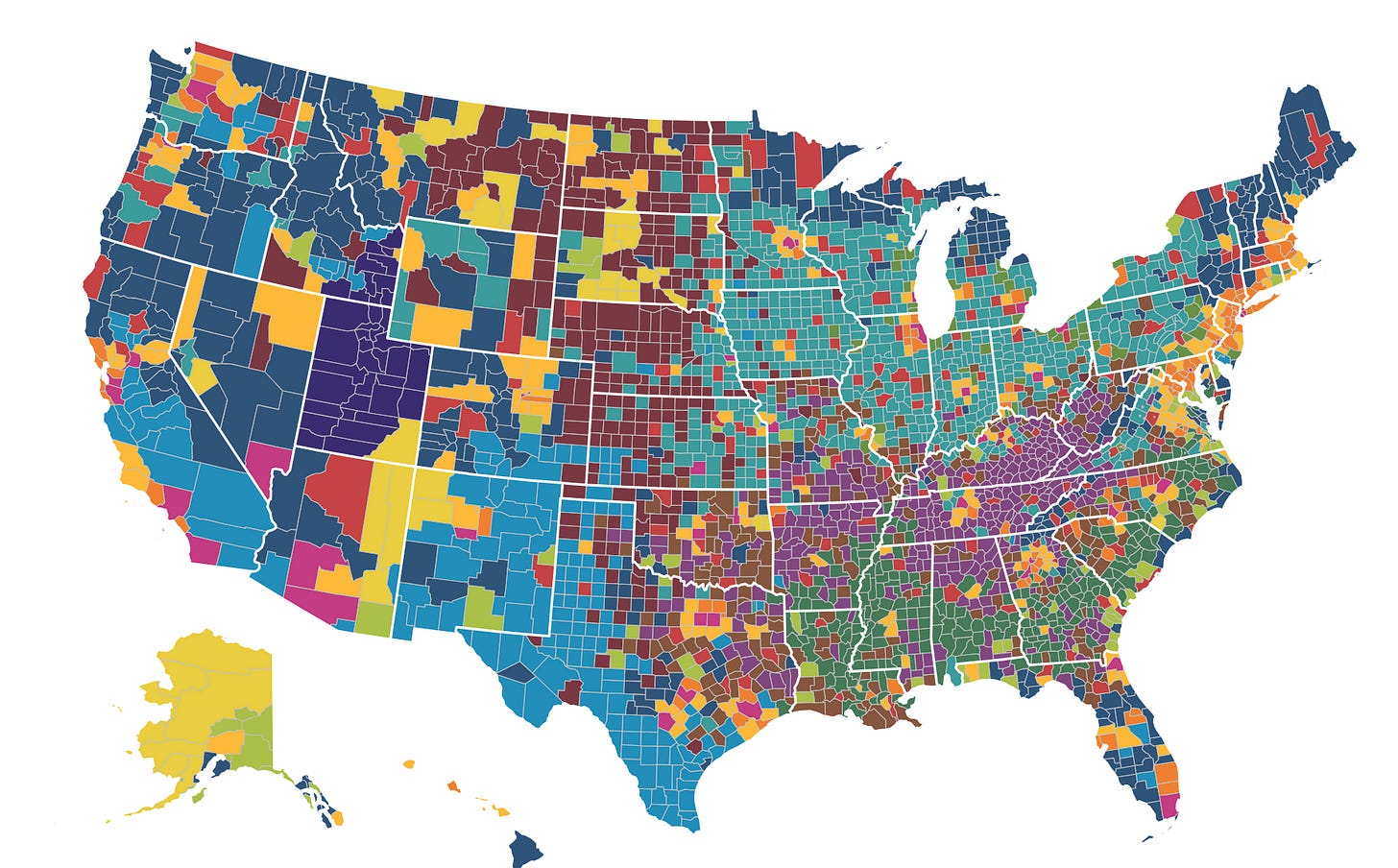
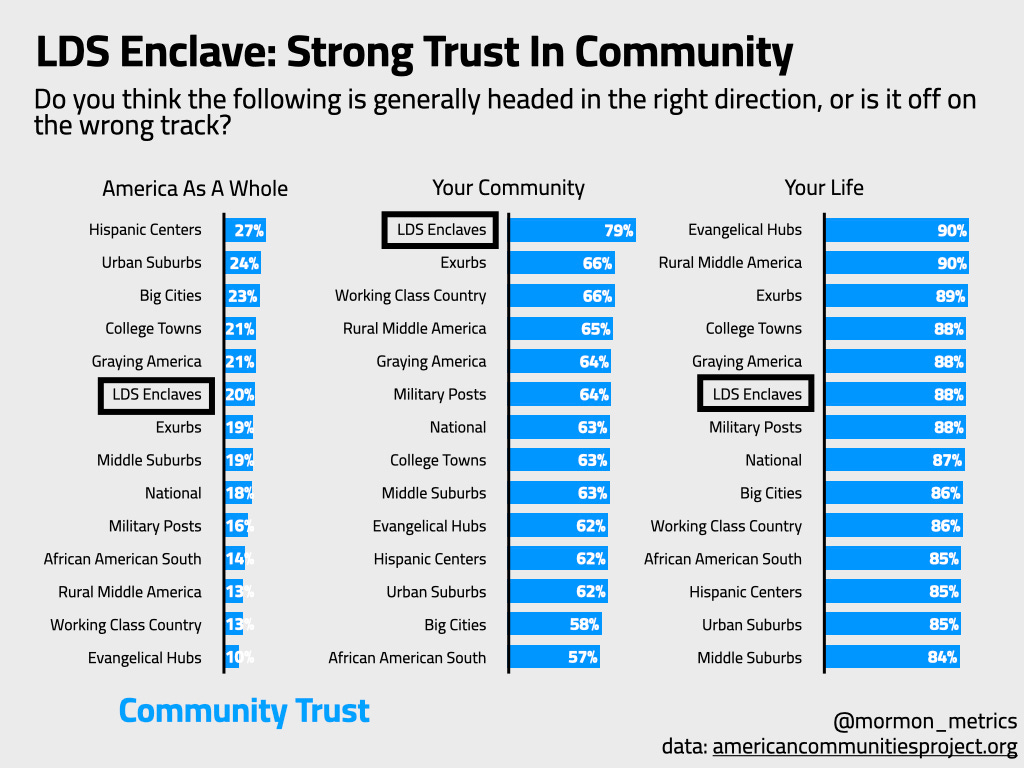
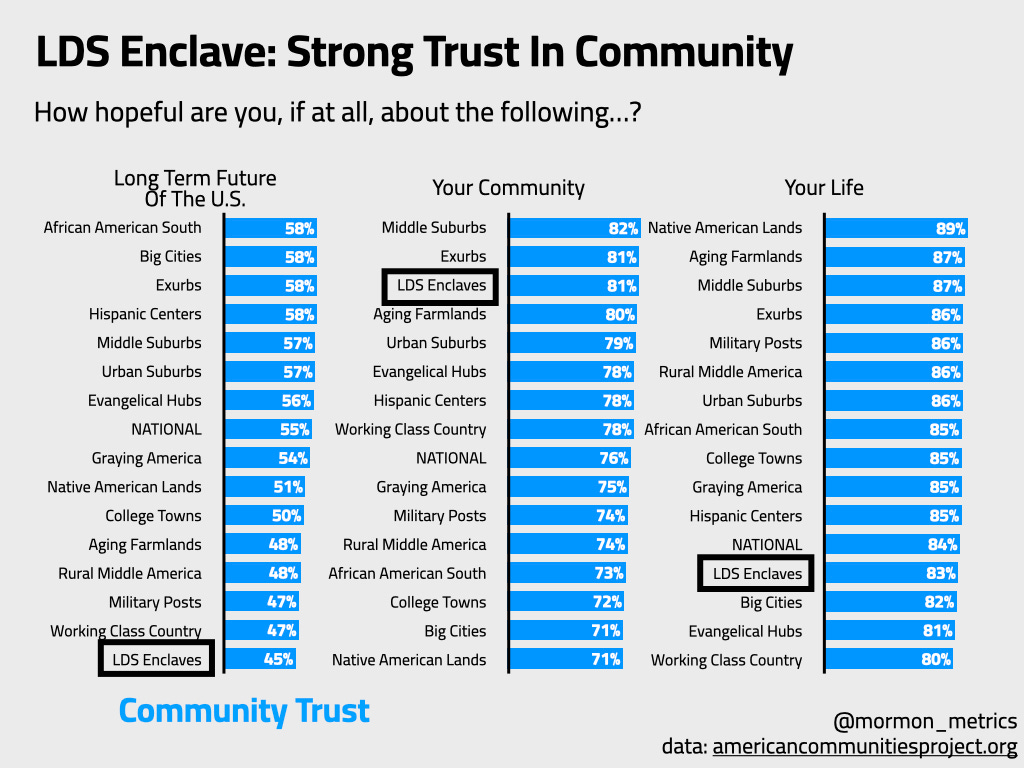
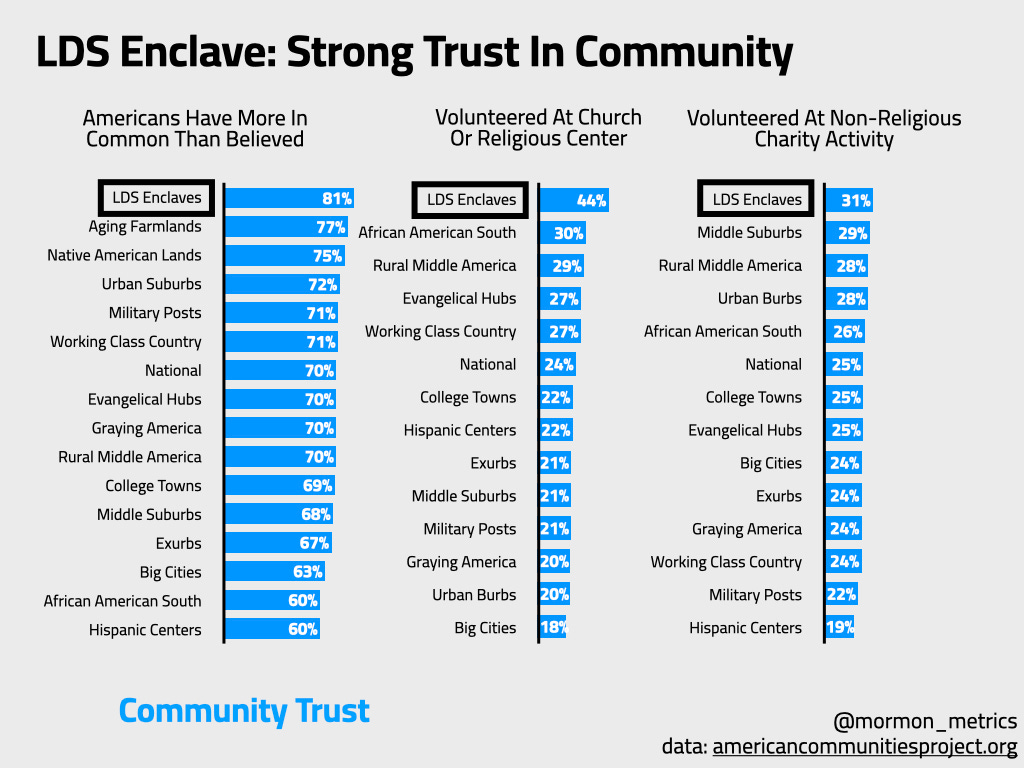
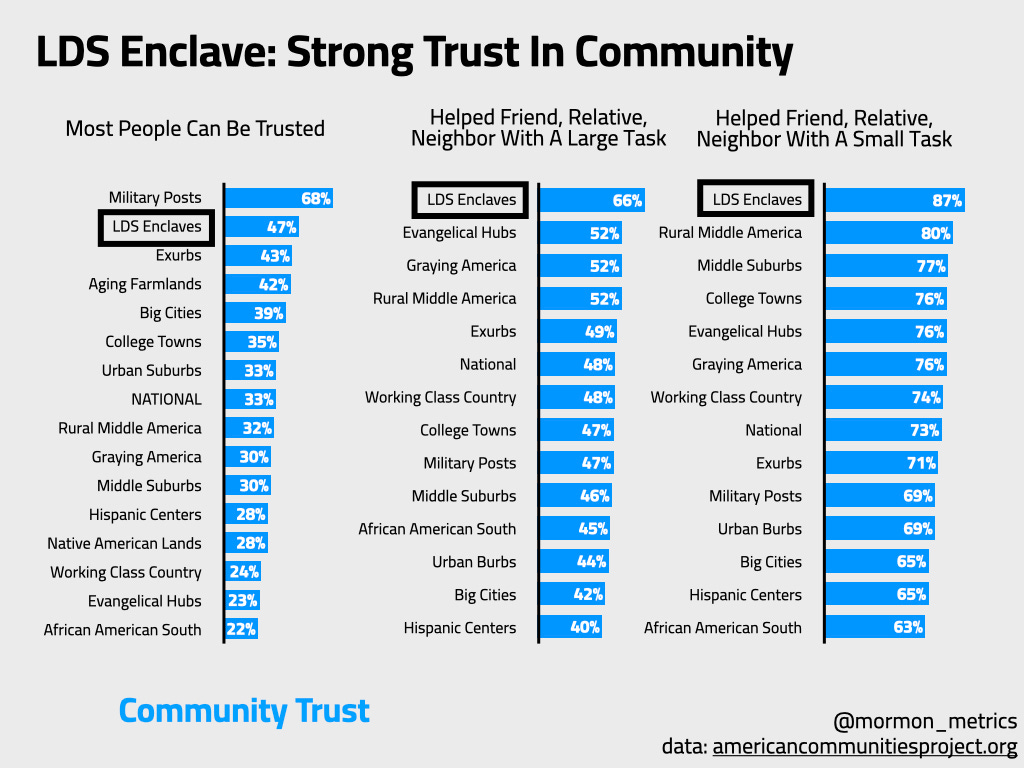

One thing that jumps out to me from all these graphs is that on some issues there is a rather narrow range of opinion across the the full spectrum of the groups included. Often all the groups fall within the same decile for a little more. On other questions differences of opinion seem much more pronounced, one group is two or three times as likely to expression one or more of the other groups. This seems like a good subject for further reflection and inquiry.